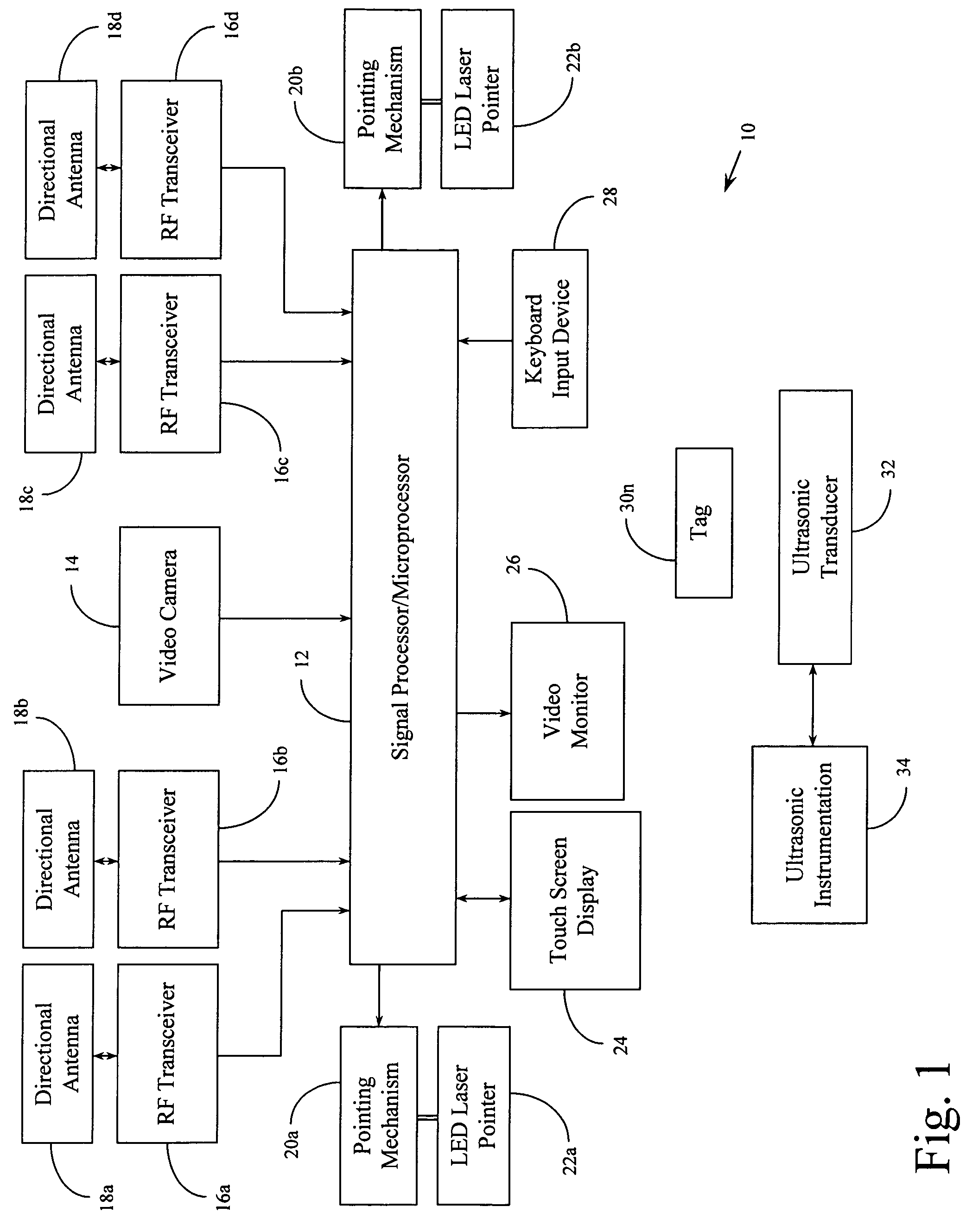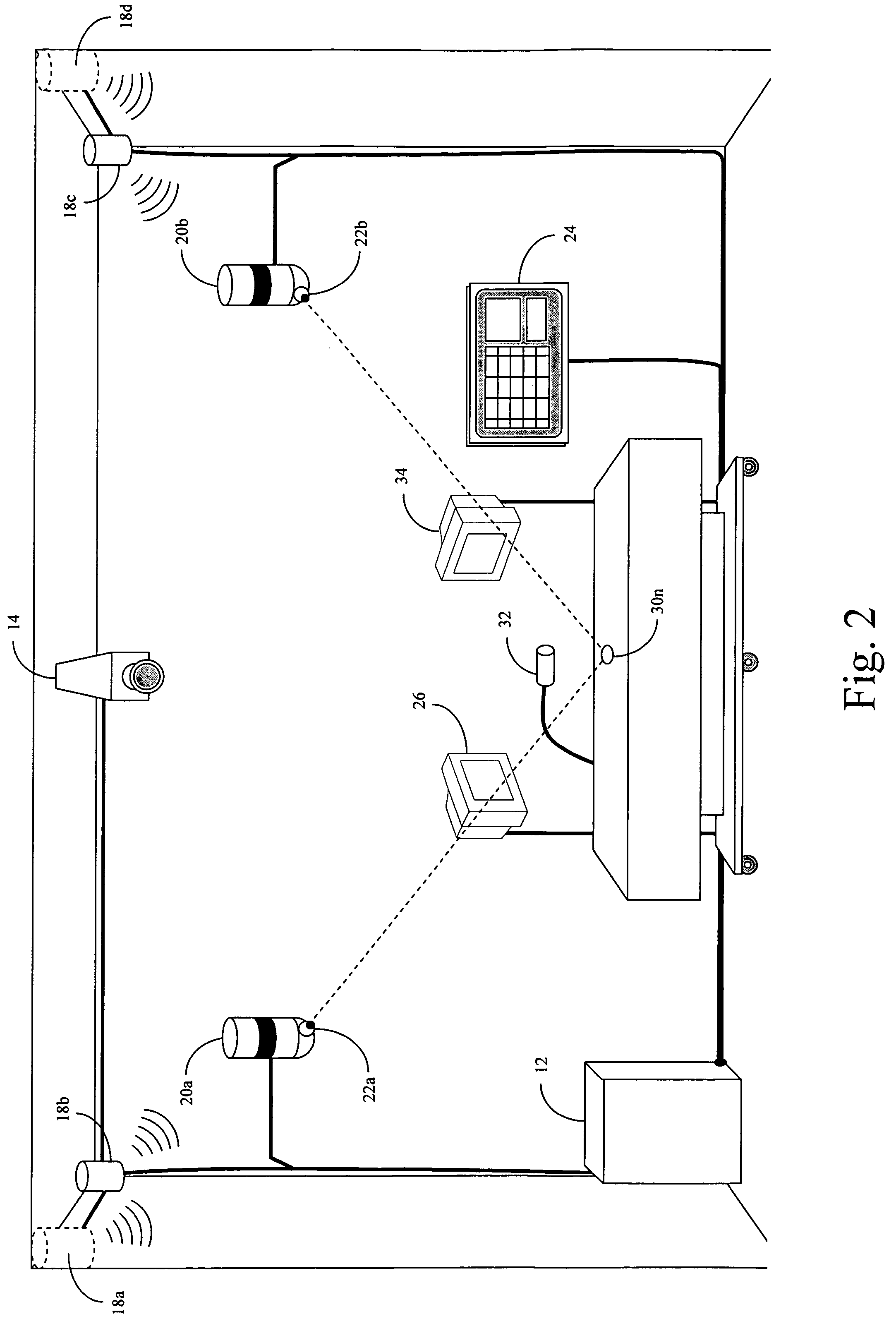System for tracking surgical items in an operating room environment
a surgical item and operating room technology, applied in the field of surgical system, methods, instruments, can solve the problems of affecting the patient's health, x-ray equipment remains generally quite large and cumbersome, and is difficult to manipulate in conjunction with the patient on the operating table, so as to narrow the focus of search
- Summary
- Abstract
- Description
- Claims
- Application Information
AI Technical Summary
Benefits of technology
Problems solved by technology
Method used
Image
Examples
Embodiment Construction
[0035]Reference is made first to FIG. 1 for a description of the overall system of the present invention and the various components that makeup the system and its functional operation. FIG. 1 is a schematic block diagram wherein each of the components are represented by a module connected to a central controller associated with the overall operation of the system. The numbering and positioning of each of the components of the system as shown in FIG. 1 are only generally associated with their physical location within the system. The actual physical structure of a typical implementation of the system is presented in greater detail in association with FIG. 2.
[0036]Tracking system 10, as shown in FIG. 1, is centered around signal processor / micro processor 12 which, in the preferred embodiment of the present invention, may simply be a PC structured with the appropriate data input and output ports for operation in conjunction with the various components of the system. In general, signal p...
PUM
 Login to View More
Login to View More Abstract
Description
Claims
Application Information
 Login to View More
Login to View More - R&D
- Intellectual Property
- Life Sciences
- Materials
- Tech Scout
- Unparalleled Data Quality
- Higher Quality Content
- 60% Fewer Hallucinations
Browse by: Latest US Patents, China's latest patents, Technical Efficacy Thesaurus, Application Domain, Technology Topic, Popular Technical Reports.
© 2025 PatSnap. All rights reserved.Legal|Privacy policy|Modern Slavery Act Transparency Statement|Sitemap|About US| Contact US: help@patsnap.com



